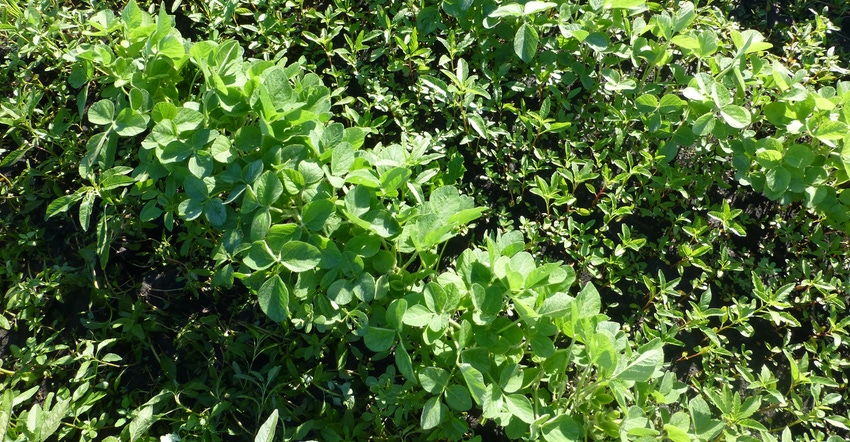January 29, 2020

Growers are often thinking ahead: From which crops to include in their rotation to which machinery to invest in. Preparing for the future is just part of the job.
Daniel Waldstein, BASF technical marketing manager, suggests that when growers put together a weed control strategy, they should think about throwing weeds a curveball with new methods rather than relying on the same practices year after year. While weed control can sometimes be a game-time decision, the increase in herbicide resistance means planning ahead and including innovative solutions.
“When building weed control programs, growers should consider how to use different chemistries in tank mixes and rotations to maximize the useful life of their herbicides,” Waldstein says.
A multiyear research study from Midwest universities demonstrated that tank-mixing different modes of action was more effective for resistance management than rotating chemistries on an annual basis. Herbicide premixes with multiple sites of action, such as Zidua PRO and Verdict herbicides, provide the convenience of broad-spectrum weed control with built-in resistance management.
Prevent weeds from emerging
Residual herbicides attack weeds when they’re most susceptible, before they emerge from the soil. Herbicides such as Zidua SC and Outlook provide residual control and are important not only for preemergence applications, but are also to applications after the crop has emerged. Overlapping residuals provide a barrier of protection from weeds like waterhemp and Palmer pigweed that continue to emerge throughout the development of the crop.
To optimize herbicide applications, scout fields to determine what weed species are present, their distribution in a field, size of the weeds and the need for a respray. “In general, post-applications should be timed when weeds are no larger than the length of a credit card,” Waldstein says. “Selecting the right nozzle, spray volume and adjuvants impact how much of the herbicide hits the target weeds.”
Environmental conditions like temperature, humidity, time of day, rainfall and wind speed can also impact the success of a herbicide application. Following the herbicide label can optimize applications, and listening to local agronomic expertise can aid in continued success.
Non-herbicide practices
Consider cultural practices such as narrow rows, crop rotation or cover crops to give the crop a competitive advantage over weeds. Additionally, mechanical methods such as tillage and cultivation can help disrupt weed seed germination and control emerged weeds. Ultimately, growers need a mindset of grit and determination to go beyond the “good enough” attitude that can hinder the long-term success of on-farm weed control.
“With weeds like waterhemp and Palmer pigweed producing a quarter of a million seeds or more per plant, we need to exercise diligence in preventing any weeds from escaping to produce seed,” Waldstein says. “To get the last weed standing, additional tactics like hand removal of escaped weeds may be necessary.”
Also, before heading from field to field, especially at harvest, growers should clean equipment so weed seeds aren’t spread field to field. While it does require additional effort, going the extra mile to get the last weed standing in each field will pay dividends both now and in years to come.
To learn more about implementing a successful, comprehensive weed control program, talk with your local BASF representative or visit agriculture.basf.com.
Source: BASF, which is solely responsible for the information provided and is wholly owned by the source. Informa Business Media and all its subsidiaries are not responsible for any of the content contained in this information asset.
You May Also Like




